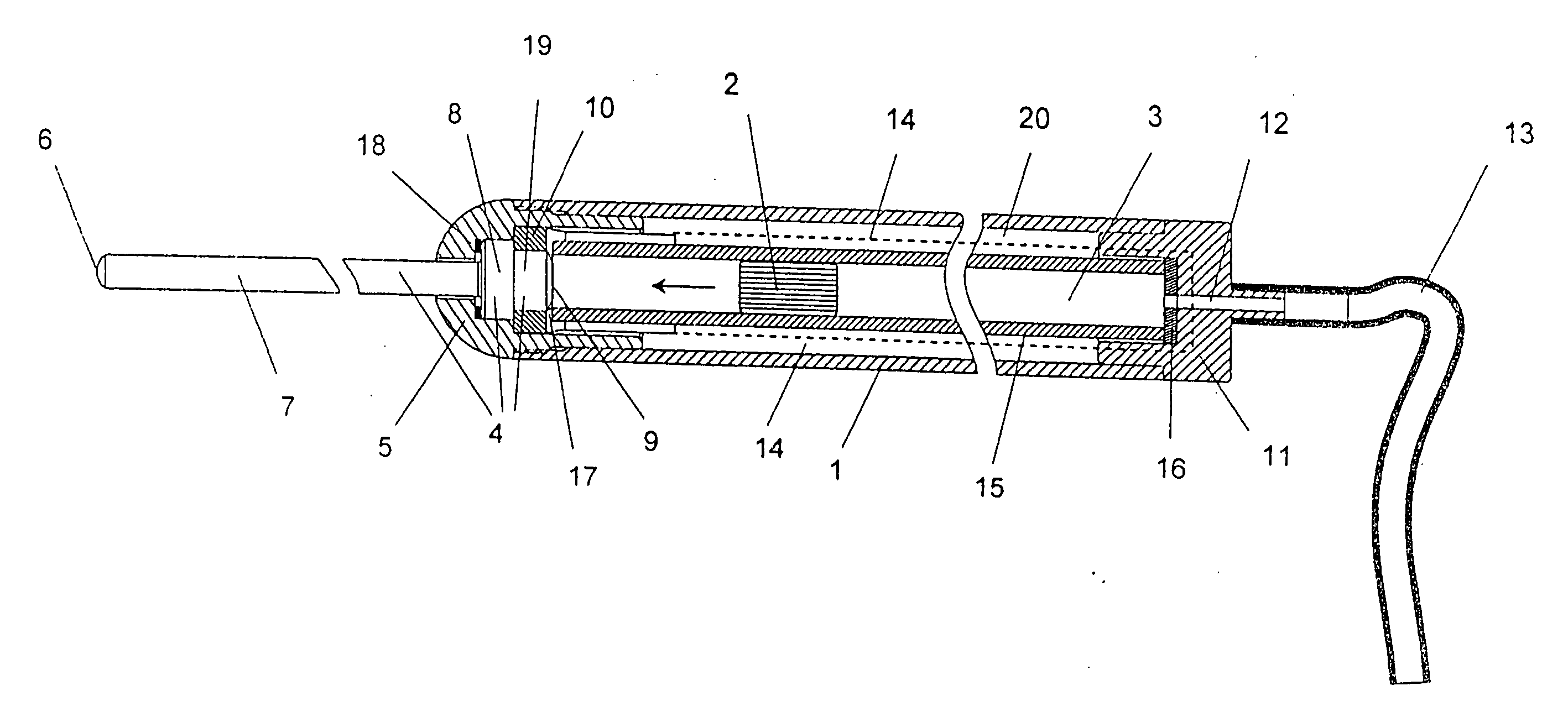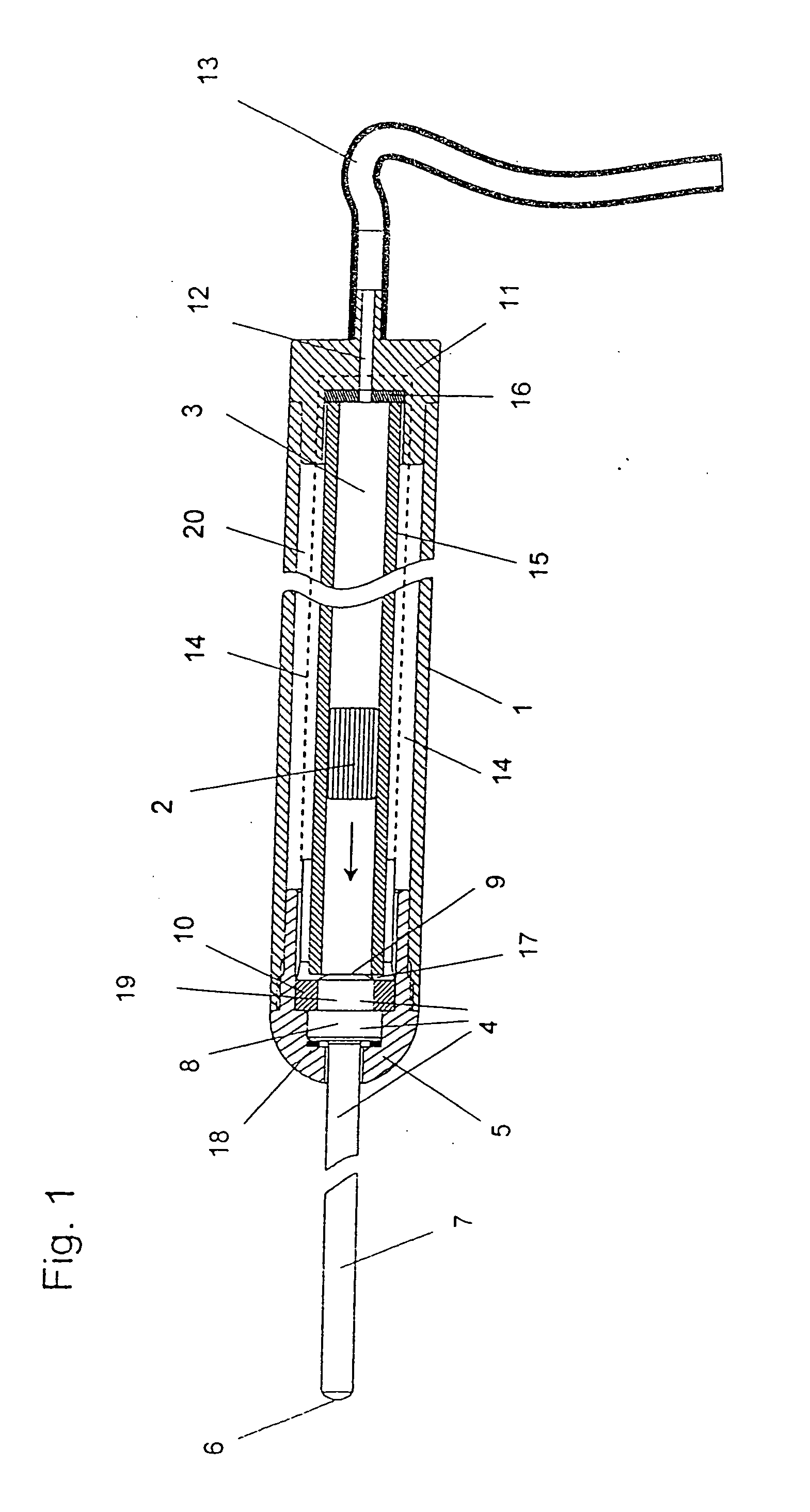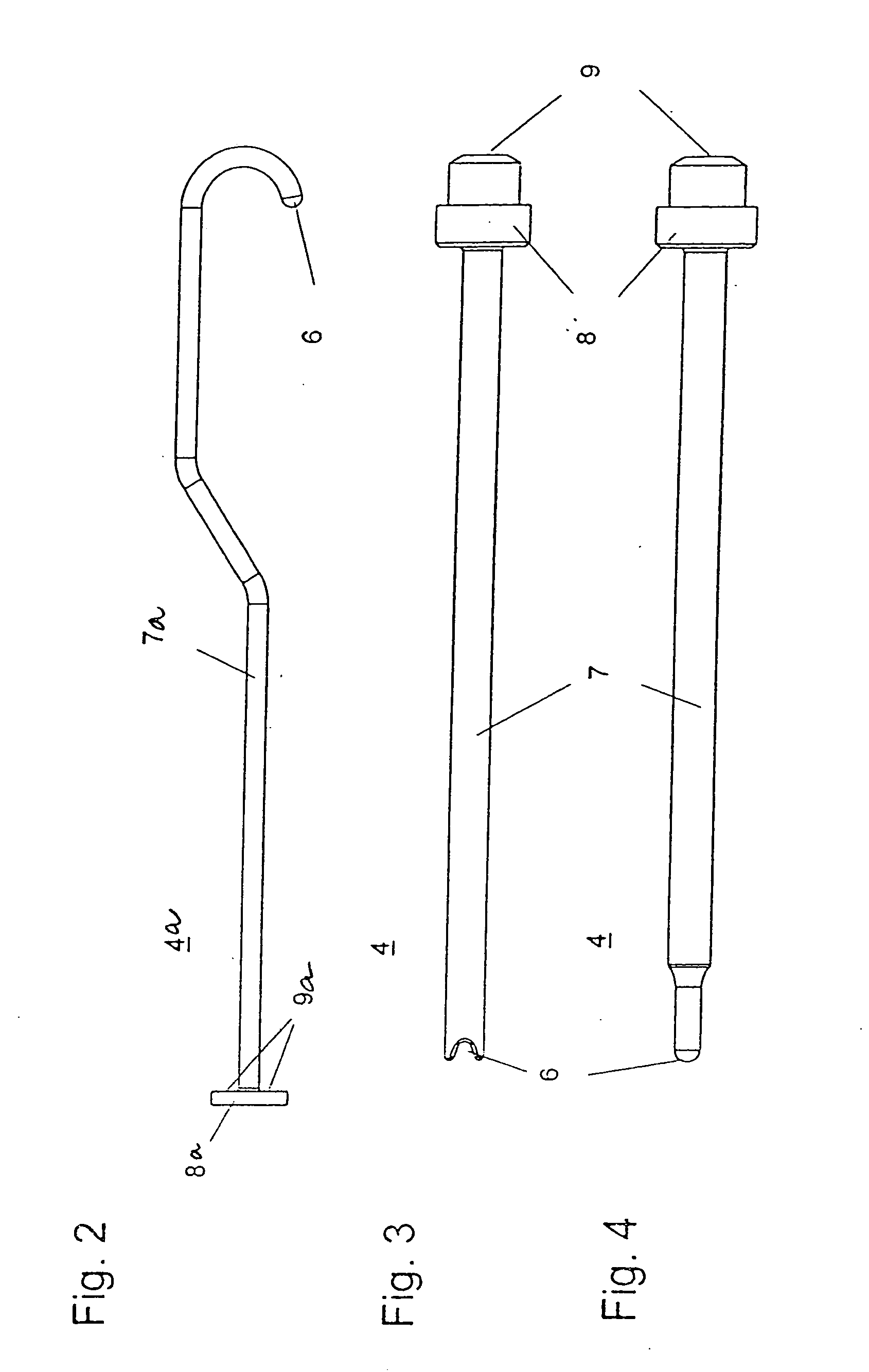Device and method for removing tooth applications such as brackets
a technology for brackets and teeth, applied in metal working devices, medical science, dentistry, etc., can solve the problems of pain for customers or patients, laborious debonding of such tooth applications, and thereby destruction of brackets
- Summary
- Abstract
- Description
- Claims
- Application Information
AI Technical Summary
Benefits of technology
Problems solved by technology
Method used
Image
Examples
Embodiment Construction
[0031]FIG. 1 shows a transmission element 4 having an impulse conductor 7 including an output surface 6 and an input surface 9. The transmission element 4 includes a guide element 8 by which it is mounted inside the distal cap 5, which is removably attached to a casing 1, such as by a screw-on or a plug-in mechanism. The guide element 8 is preferably a suitably adapted proximal end of the impulse conductor 7, which is axially and radially journaled by means of a corresponding cross-sectional enlargement in the distal cap 5.
[0032] A cylinder 15 in which a mass 2 is moveably suspended, is disposed coaxially to the transmission element 4. In the displacement space 3 inside the cylinder 15, mass 2 may move from a proximal stop 16 to the input surface 9 of the transmission element 4. Stop 16 is connected to a port 12, to which a supply line 13 may be connected. For example, pneumatic or hydraulic pressure fluids may be fed through the supply line to accelerate the mass 2 in the directio...
PUM
| Property | Measurement | Unit |
|---|---|---|
| impact velocity | aaaaa | aaaaa |
| mass | aaaaa | aaaaa |
| displacement | aaaaa | aaaaa |
Abstract
Description
Claims
Application Information
 Login to View More
Login to View More - R&D
- Intellectual Property
- Life Sciences
- Materials
- Tech Scout
- Unparalleled Data Quality
- Higher Quality Content
- 60% Fewer Hallucinations
Browse by: Latest US Patents, China's latest patents, Technical Efficacy Thesaurus, Application Domain, Technology Topic, Popular Technical Reports.
© 2025 PatSnap. All rights reserved.Legal|Privacy policy|Modern Slavery Act Transparency Statement|Sitemap|About US| Contact US: help@patsnap.com



